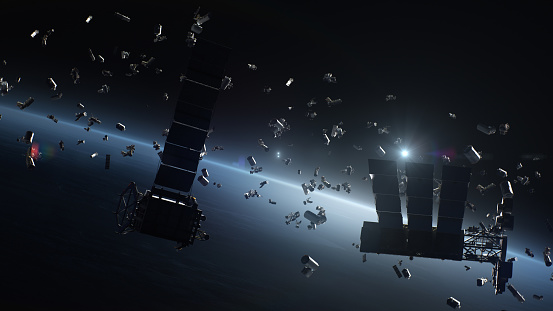The UK's ODIN Space just aced its 1st space junk tracking system test in orbit
The technology will be able to extrapolate the trajectory of the smallest pieces of space junk.

A new method of tracking tiny pieces of space junk has passed its first demonstration test in orbit, according to its builders ODIN Space of London.
Over the past two years, ODIN has been developing and qualifying technology to detect and track space junk that is too small to register using existing methods. The company's first demonstration sensor was integrated into the D-Orbit ION satellite, which hitched a ride to orbit as part of SpaceX's Transporter-8 mission that launched June 12.
Now, after more than a week on orbit, ODIN has confirmed with D-Orbit that their onboard sensor is operational, and picked up faint acoustic vibrations from its host satellite. For this demo flight, ODIN's debris sensor was set to an exceptionally high sensitivity, to ensure even the smallest of readings from the ION satellite could be detected.
Related: Space junk clean up: 7 wild ways to destroy orbital debris
There are tens of thousands of pieces of trackable debris in orbit around Earth, with that number expected to increase exponentially into the 2030s and beyond with the continuing growth of the space economy. Using current technology, only pieces of debris larger than around 4 inches (10 centimeters) are able to be tracked. ODIN hopes its technology will help track sub-centimeter debris, which travel in near invisibility, at bullet speeds, and pose threats to satellites, space stations and other on-orbit infrastructure.
"We'll now focus on providing our customers with the next generation of space data and sending many more sensors to every orbit," said ODIN CEO and co-founder James New in an ODIN press release, adding, "by understanding how lethal, sub-centimeter debris behaves, we can protect space assets, maximize growth and drive sustainability in space."
Related: Space debris spurs a bold change in US government regulations
Get the Space.com Newsletter
Breaking space news, the latest updates on rocket launches, skywatching events and more!
Now, ODIN plans to scale up the technology in order to bring the technology to the commercial market. Once operational, ODIN's sub-centimeter sensor will be able to track the size, location and, for the first time, the speed and trajectory of debris measuring as small as 1/250th of an inch (0.1 millimeters).
With this trajectory mapping, ODIN strives to build complex models of sub-centimeter debris to improve situational awareness for thousands of satellites in Earth orbit.
Join our Space Forums to keep talking space on the latest missions, night sky and more! And if you have a news tip, correction or comment, let us know at: community@space.com.

Josh Dinner is the Staff Writer for Spaceflight at Space.com. He is a writer and photographer with a passion for science and space exploration, and has been working the space beat since 2016. Josh has covered the evolution of NASA's commercial spaceflight partnerships and crewed missions from the Space Coast, as well as NASA science missions and more. He also enjoys building 1:144-scale model rockets and human-flown spacecraft. Find some of Josh's launch photography on Instagram and his website, and follow him on X, where he mostly posts in haiku.
-
TemporaryUserName1154 I suggest the used of Satellite with major magnet to absorb space junk when passing. Once all collected, take it out. Zap.Reply









